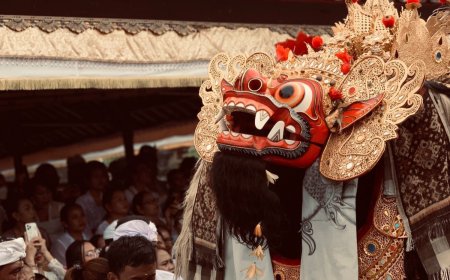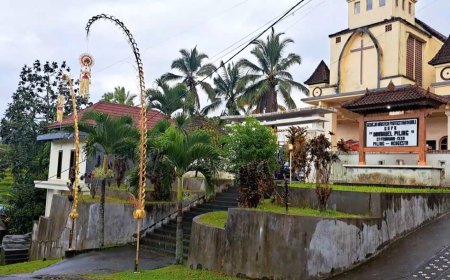Ngerebeg of Tegallalang Village: A Sacred Tradition for the Harmony of Bhuana Alit and Bhuana Agung
Ngerebeg is one of the sacred traditions still preserved by the people of Tegallalang Village, Gianyar, Bali. This tradition reflects a deep connection between humans, nature, and spirits within the Hindu-Balinese cosmology. Through the Ngerebeg procession, the villagers strive to maintain balance between Bhuana Alit (microcosm) and Bhuana Agung (macrocosm), a Hindu philosophical concept that emphasizes harmony between humans and the universe.

Ngerebeg is rooted in the Balinese belief in the sekala (visible) and niskala (invisible) worlds. In this tradition, it is believed that negative energy and evil spirits can disrupt the balance of nature and human life. Therefore, the Ngerebeg ritual is performed as an effort to cleanse the village from these harmful influences and restore harmony in nature.
The Ngerebeg tradition is also closely linked to the ceremonies at Pura Duur Bingin, the main temple in Tegallalang Village. Usually, Ngerebeg is held every six months after the Galungan holiday, aimed at praying for fertility and prosperity for the entire village. This tradition has been passed down through generations and is still preserved today as an important part of the village’s heritage.
In the Hindu-Balinese concept, Bhuana Alit reflects the human self as a small part of the universe, while Bhuana Agung represents the universe itself. Ngerebeg is a physical and spiritual manifestation of the community's efforts to harmonize these two dimensions. Through this ritual, the villagers believe they can expel evil spirits, neutralize negative energy, and maintain the purity of nature.
The Ngerebeg ritual begins with the creation of barong-barongan, replicas of the barong, which are paraded around the village. The barong is a symbol of protection and positive energy in Balinese mythology. Children and teenagers of the village wear leaf costumes and are sometimes painted to resemble mystical characters. They carry the barong-barongan while going around the village to drive away evil spirits.
Barong-Barongan Circling the Village (Source: Personal Photo)
The Ngerebeg procession is not just a traditional ritual, but also an event to strengthen the sense of togetherness among the villagers. During the procession, the entire community participates in various activities, from preparing the materials to accompanying the procession with gamelan music. The noise produced is believed to drive away negative forces and maintain the energy balance in the village.
Apart from its spiritual dimension, Ngerebeg also has a strong social aspect, which is maintaining the cleanliness of the village. This procession is often accompanied by communal cleaning activities, where villagers work together to clean up the village, both from physical waste and from negative energy that is believed to affect the well-being of the community.
Ngerebeg Maintaining Village Cleanliness (Source: Personal Photo)
Physical cleanliness is seen as a reflection of spiritual purity. The villagers believe that a clean and sacred environment will attract positive energy and protect the village from calamities. This cleaning process is not only material but also spiritual, conducted through prayers and offerings to the gods.
For the people of Tegallalang, Ngerebeg is a symbol of spiritual and cultural strength. Amidst the advancement of modern times and the influence of modernity, this tradition continues to survive as a reminder of the importance of maintaining balance between humans and the universe. Ngerebeg is not only a cultural celebration but also a means of educating the younger generation about religious and social values.
Moreover, the Ngerebeg tradition has gained recognition among tourists and has become a cultural attraction in Bali. Tourists who visit Tegallalang not only enjoy the famous rice terraces but also get to experience the unique spiritual traditions such as Ngerebeg. However, for the local community, the essence of Ngerebeg remains sacred and is not merely a spectacle.






























































